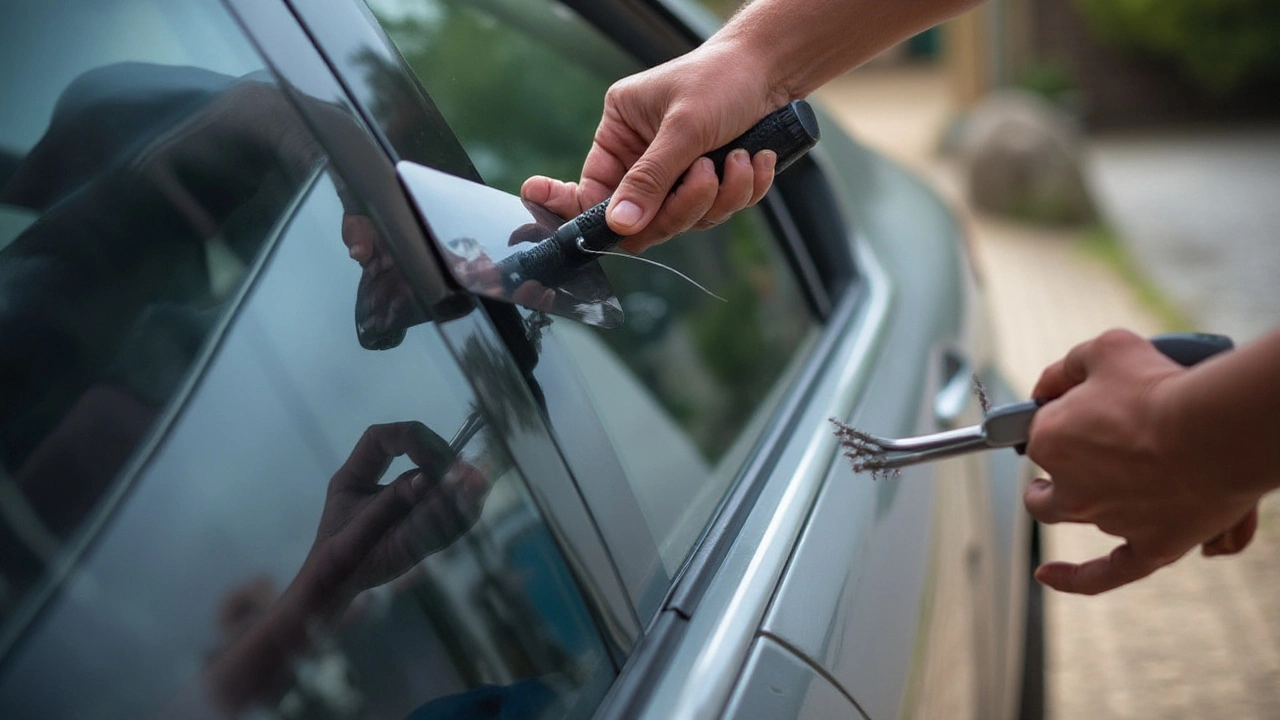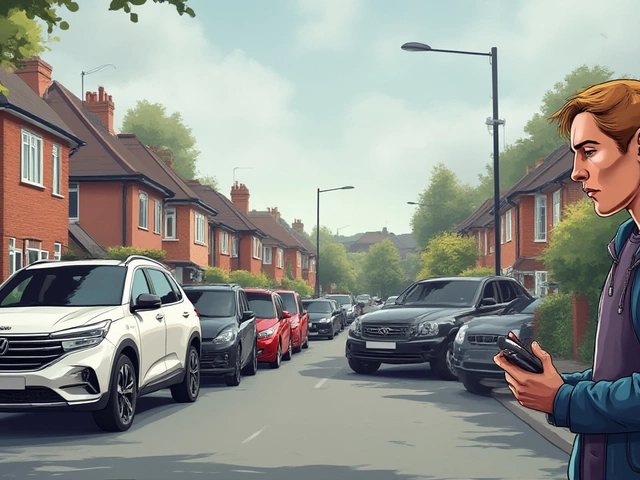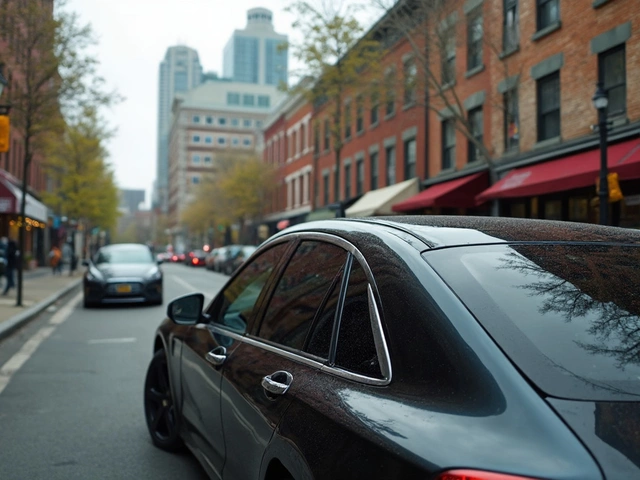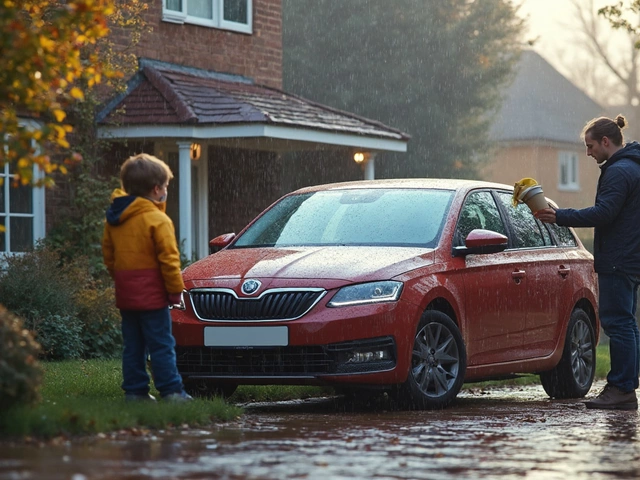When it comes to window tinting, choosing the right shade can make a world of difference in both style and function. You might wonder, 'Which is darker, tint 20 or 35?' Whether you're looking to enhance privacy, reduce glare, or simply give your vehicle a sleek look, understanding the nuances of window tint darkness is crucial.
Window tints are often represented by a percentage, indicating the amount of light that the tint allows to pass through. A lower percentage means a darker tint. This simple concept can get tricky when balancing legal regulations, personal preference, and practical benefits.
Let's dive into understanding what sets apart tint 20 and tint 35, helping you make an informed decision aligned with your needs and desires.
- Understanding Window Tint Percentages
- Pros and Cons of 20% Tint
- Pros and Cons of 35% Tint
- Legal and Practical Considerations
Understanding Window Tint Percentages
When diving into the world of window tinting, understanding the percentages associated with tint options is the cornerstone of making an informed decision. Essentially, these percentages refer to the Visible Light Transmission (VLT) level, which measures the amount of light that can pass through the window film and into your vehicle. A lower percentage equates to a darker tint. Consequently, a 20% tint allows less light to pass through than a 35% tint. This distinction plays a crucial role not only in aesthetics but also affects driving comfort and privacy.
Vehicle owners are often keen on tinting services for various reasons—be it reducing glare, enhancing privacy, or preserving the interior from UV damage. But it is important to know precisely how much light your chosen tint allows. For those living in sunny climates, a darker tint such as 20% may be more appealing due to its ability to significantly reduce solar heat gain and diminish glare. Meanwhile, a 35% tint can offer a harmonious blend, providing ample protection while offering better visibility.
The science behind window tinting is fascinating. According to a study by the International Window Film Association, automotive window films can block up to 99% of harmful UV rays, which are a leading cause of fading in car interiors. This not only extends the lifespan of your vehicle's interior but also offers health benefits for passengers by minimizing skin exposure to these rays. Understanding these benefits ensures your choice of tint does more than just look appealing—it serves practical purposes.
"The right window tint can transform not just your vehicle’s look, but your driving experience," remarked Tom Johnson, a seasoned auto expert at Car Craft Weekly.
Different states and regions have specific laws regarding window tint levels. It's crucial to verify these regulations because they dictate the allowable VLT levels to ensure the driver’s visibility is uncompromised. Misunderstanding the legality can lead to fines or the need to remove non-compliant tints. While darker tints undoubtedly provide privacy and style, balancing these with legal guidelines is key.
For a deeper appreciation, let's examine a comparative scenario: a 20% tint might be favored by those primarily interested in privacy or aesthetics, whereas a 35% tint might be chosen by individuals prioritizing visibility and adherence to more stringent legal standards. Such aspects should always be considered alongside climate and personal preference. A wise selection will harmonize both the functional and aesthetic desires of the vehicle owner.

Pros and Cons of 20% Tint
The 20% window tint is often favored by those who seek a certain level of privacy and a touch of elegance for their vehicles. This tint level allows only 20% of visible light to pass through the windows, making it significantly darker compared to lighter tints like 35%. One of the most appealing aspects of the 20% tint is its ability to effectively block UV rays, thereby protecting the vehicle's interior from fading and cracking over time. With the rising concern over skin health, having UV protection becomes a vital factor for many car owners. This tint also contributes to reducing the heat inside the car, making it more comfortable during hot days by cutting down on the need for air conditioning. This not only enhances comfort but can also contribute to better fuel efficiency by reducing the load on your car’s air conditioning system.
Another big advantage of the 20% tint is the level of privacy it offers. People often choose 20% window tinting to obscure the view inside the car, which can be particularly essential for storing valuables without prying eyes constantly peeking inside. From an aesthetic point of view, darker tints like the 20% can give vehicles a more stylish, sleek appearance, often associated with high-end cars. However, it’s not all about style and privacy. It's important to consider that, in many jurisdictions, there are legal restrictions on how dark a window tint can be for certain windows of the car. It’s crucial to consult local regulations to ensure compliance, as failing to do so can lead to fines or having to remove the tint altogether.
On the downside, the most obvious challenge with a 20% tint is visibility, particularly under low-light conditions such as at night or during heavy rain. Driving with dark tints can sometimes feel like wearing sunglasses at night. This reduced visibility can pose a serious risk, potentially leading to accidents if the driver isn’t cautious. Window tinting at this level might affect the ability to see pedestrians and other vehicles, which is an important consideration for those prioritizing safety. Maintenance and cleaning also need to be more meticulous with darker tints. Scratches and dirt become more apparent, so ensuring regular cleaning with proper materials that do not damage the tint is necessary. Despite these challenges, when used wisely and legally, a 20% tint can greatly enhance the driving experience.
"20% tint strikes a balance between offering significant privacy and remaining legally acceptable in many areas. It's often chosen by car enthusiasts who want a blend of style and functionality," says Maria Jensen, a well-known automotive journalist.
Legal Considerations
Before opting for a 20% tint, it is advisable to consult the tinting laws specific to your region. Laws vary widely, with some states allowing it on rear windows but prohibiting it on front side windows, while others might have uniform requirements regardless of window type. Make sure to also inquire about the potential need for a medical exemption if higher UV protection is medically warranted. While 20% offers undeniable benefits, being informed about its legal and practical implications will help ensure a satisfying and trouble-free experience.

Pros and Cons of 35% Tint
Choosing 35% tint for your windows often strikes an appealing balance between aesthetics and functionality. It typically allows approximately 35% of visible light to pass through, providing a moderate level of darkness that many find neither too extreme nor too light. This percentage is popular for those who want to enhance their vehicle's appearance while also maintaining good visibility. Many car owners appreciate the ease with which they can see out of these moderately tinted windows, even at night or in dim lighting conditions. This visibility can be particularly beneficial for those who frequently drive in less-than-ideal weather or busy city streets where clear sight lines are a safety must.
A popular benefit of a 35% tint is its compatibility with legal standards in different states across the US, as it often falls within the acceptable range of tint darkness. This flexibility means peace of mind for car owners who travel through various jurisdictions. Furthermore, the tint provides a noticeable reduction in glare from the sun and oncoming vehicles' headlights, making driving more comfortable and less straining for the eyes. A crucial yet often overlooked advantage is the added window tinting structure support; it holds glass pieces together in the event of an accident, acting as an extra layer of safety by reducing shattering.
On the flip side, those opting for 35% tint should consider a few potential downsides. While 35% tint does offer some privacy, it does not provide complete privacy and may not fully obscure the view into your vehicle, especially during bright daylight. Individuals who prioritize interior cabin concealment might find this percentage insufficient compared to darker tints like 20%. Additionally, though it blocks a significant amount of UV rays, those looking for optimal UV protection might need to look towards specialized films designed for maximum UV filtering beyond standard tinting. One should also be mindful of how climates play a role; in particularly hot regions, some might prefer a darker tint which provides better heat rejection to keep interiors cooler.
"Moderation in everything, including tinting, is key," notes industry expert and car enthusiast John Davis in Automotive Weekly. "The 35% tint offers many benefits, but it’s crucial to align it with your specific needs and locale requirements."
For those weighing options in window tinting, it’s useful to note that 35% strikes a good balance by aiding in temperature regulation and protecting the vehicle's interior from UV-related fading. Drivers who have leather or premium upholstery might see an expansion in the lifespan of their interiors thanks to the tint's protective capabilities. Further evaluation often involves considering personal preferences combined with geographical and legal considerations. The 35% tint symbolizes a middle-ground choice, ideal for individuals seeking a mix of style, safety, and functionality without heavily compromising on any aspect.

Legal and Practical Considerations
When delving into the realms of window tinting, one significant aspect that often gets more than a mere glance is legal compliance. Different regions have distinct regulations concerning window tint percentages, which can vary widely from one jurisdiction to another. While a 20% tint might be perfectly legal in some states, allowing just the right amount of privacy and UV protection, it could pose legal challenges in others where laws mandate a lighter shade, like the 35% tint. Understanding these nuances not only ensures peace with the law but can also avoid hefty fines and potentially unsafe situations.
Practical considerations extend beyond the spectrum of legality. For instance, selecting between the 20 tint and the 35 tint involves evaluating the actual driving conditions one frequently encounters. In sunnier climates, where glare from the sun can be relentless, a darker tint might be more appealing. This is because it substantially reduces glare, hence improving driving comfort. On the flip side, in regions where cloud cover is more endemic, a lighter tint could better serve drivers by maximizing visibility.
Aside from weather conditions, one must also consider the vehicle’s air conditioning efficiency. Tinted windows, regardless of their darkness, provide an intrinsic benefit of reducing solar heat gain. Yet, it is crucial to recognize the extent to which different tints contribute to this cooling benefit. Balancing heat regulation with the need for visibility, especially during nighttime driving, forms a critical part of the decision. With a 20% tint, one enjoys more privacy and a cooler cabin, but risks reduced visibility at night. Conversely, a 35% tint offers a moderate improvement in heat rejection while maintaining a more transparent view during low-light conditions.
The conversation around window tinting cannot be complete without mentioning safety. While a darker tint provides a higher degree of shatter resistance by holding glass fragments together in the event of an impact, this safety feature needs to be weighed against potential risks like impaired visibility. It's interesting to note reports suggesting that
"tints can potentially bolster safety by acting as a deterrent for thieves," according to a survey conducted by the automotive research group, JATO Dynamics.
Ultimately, the choice between 20 tint and 35 tint is a balancing act, blending personal preference with practical implications, such as regulatory adherence and environmental adjustments. It pays off to do a little research, talk to local professionals, and even test out window films if possible, to truly feel confident in the tint that strikes your perfect compromise.




